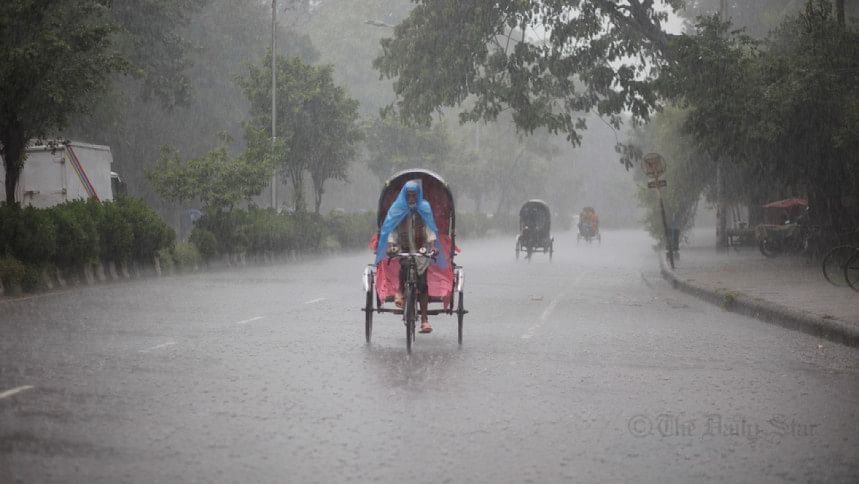Bangladesh may see more severe weather events due to changing rainfall patterns

Experts have warned that the Himalayan region, which is already suffering from severe flooding, notably in the northeastern portion of Bangladesh, may see even more devasting natural disasters brought on by climate change as a result of changing rainfall patterns.
They blamed the non-scientific downstream water management strategy as well as the climate change for the excessively heavy downpours.
Anjal Prakash, lead author of the IPCC (intergovernmental panel on climate change) and director of IPCC Ocena and Cryosphere Research, claimed that climate change ushered in early monsoon and precipitation with a warmer climate influenced the rainfall pattern and variability, leading to the floods in the Himayalan region, particularly the Sylhet flood.
"Rainfall patterns in the Himalayan regions have changed, causing unpredictability in the weather. Numerous people were killed in two waves of flash floods that occurred in India due to extremely heavy rain," said Prakash.
His study on the effects of climate change on monsoon patterns showed that a wetter environment has been forecast for this area.
According to Prakash's findings, the rainfall unpredictability means that the seasons' precipitation may occur in only a few intense downpours, with the other days being dry.
Lourergorh in Sunamganj and Lalakhal in Sylhet, Bangladesh, have already accumulated more rainfall than the average for this month.
The Flood Forecasting and Warning Centre reported that Lalakhal received 212.9 cm of rain compared to the long-term average of 205.9 cm and Lourergorh received 164.8 mm of rain compared to the average normal of 149.5 cm.
The powerful monsoon winds in the Bay of Bengal might carry a lot more moisture than previously in reaction to global warming, according to Roxy Mathew Koll, the lead author of IPCC Oceans and Cryosphere, in the chapter on Indian Ocean Warming in the Climate Assessment report. The general rise in atmospheric moisture levels is a reaction to temperature increases.
This is because warmer air retains moisture better and for a longer period of time. Thus, he suggested, the current heavy rainfall may be a result of climate change.
Koll in the climate report further mentioned about the shift in South Asia's monsoon pattern, pointing out that it has been a result of climate change since the 1950s and that the most notable change is that the monsoon season is now divided into lengthy dry intervals that are punctuated by periods of intense rain.
According to him, the total quantity of rainfall will grow by seven percent overall and up to 10 percent in the monsoon zone for every 1 degree Celsius temperature rise. Extreme rainfall events are also expected to occur correspondingly throughout South Asia.
The nature of floods has evolved, said AKM Saiful Islam, professor at the Institute of Water Modelling and Management at Bangladesh University of Engineering Technology (BUET).
"Before the monsoon in May, we had early floods. Currently, Bangladesh's northern region is experiencing another devastation-inducing flood. We now have severe floods in quick succession at the start of the monsoon, which wasn't the case in the past. Additionally, rainfall occurs almost six to seven times each month and has grown in overall volume over the years. We must be ready for this unforeseen floods, he added.

 For all latest news, follow The Daily Star's Google News channel.
For all latest news, follow The Daily Star's Google News channel. 











Comments